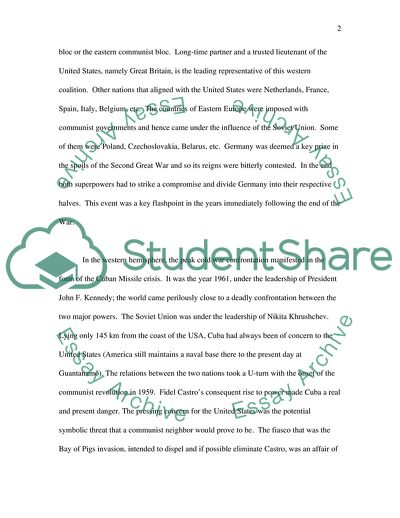Cite this document
(Comparison and Contrast Between the Cold War in Europe and Asia Essay Example | Topics and Well Written Essays - 1250 words, n.d.)
Comparison and Contrast Between the Cold War in Europe and Asia Essay Example | Topics and Well Written Essays - 1250 words. https://studentshare.org/politics/1712614-compare-and-contrast-discuss-the-cold-war-in-europe-and-asia
Comparison and Contrast Between the Cold War in Europe and Asia Essay Example | Topics and Well Written Essays - 1250 words. https://studentshare.org/politics/1712614-compare-and-contrast-discuss-the-cold-war-in-europe-and-asia
(Comparison and Contrast Between the Cold War in Europe and Asia Essay Example | Topics and Well Written Essays - 1250 Words)
Comparison and Contrast Between the Cold War in Europe and Asia Essay Example | Topics and Well Written Essays - 1250 Words. https://studentshare.org/politics/1712614-compare-and-contrast-discuss-the-cold-war-in-europe-and-asia.
Comparison and Contrast Between the Cold War in Europe and Asia Essay Example | Topics and Well Written Essays - 1250 Words. https://studentshare.org/politics/1712614-compare-and-contrast-discuss-the-cold-war-in-europe-and-asia.
“Comparison and Contrast Between the Cold War in Europe and Asia Essay Example | Topics and Well Written Essays - 1250 Words”. https://studentshare.org/politics/1712614-compare-and-contrast-discuss-the-cold-war-in-europe-and-asia.


